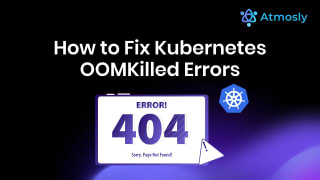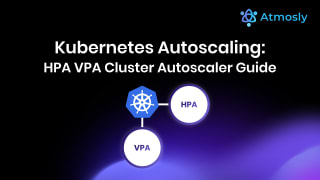For modern SaaS companies, speed, scalability, and reliability are non-negotiable. As customer bases grow and demands shift rapidly, infrastructure must be able to support dynamic workloads, evolving configurations, and secure, compliant operations. Kubernetes has emerged as the gold standard for orchestrating containerized applications—and for good reason.
This blog explores why Kubernetes is not just a smart choice, but arguably the best infrastructure decision a SaaS company can make today.
1. Scalability That Matches SaaS Growth
SaaS platforms need to support unpredictable traffic patterns—whether it's a spike due to onboarding a large enterprise client or seasonal demand surges.
How Kubernetes helps:
- Horizontal Pod Autoscaling: Automatically adjusts the number of running application instances based on live metrics such as CPU or memory usage. No manual intervention needed.
- Cluster Autoscaler: Adds or removes nodes in your Kubernetes cluster based on real-time resource requirements.
- Multi-zone Deployment: Ensures high availability by distributing workloads across availability zones, reducing the risk of downtime due to a zonal failure.
These features enable SaaS providers to scale quickly and efficiently, delivering consistent performance even under pressure.
2. Strong Multi-Tenancy Capabilities
Running multiple customer environments on shared infrastructure without compromising security or performance is a major challenge.
How Kubernetes solves this:
- Namespaces: Let you isolate resources, configurations, and access controls for each tenant, providing logical boundaries within the same cluster.
- RBAC (Role-Based Access Control): Fine-tunes user access and permissions to ensure each team or tenant only has access to their own environment.
- Network Policies: Control traffic flow between pods, ensuring strict tenant isolation at the network level.
- Virtual Clusters (vCluster): Provide tenants with their own API server and control plane, offering near full-cluster isolation without duplicating entire infrastructure.
With these capabilities, Kubernetes allows you to support thousands of tenants in a secure, efficient manner.
3. Seamless CI/CD Integration and GitOps
To stay competitive, SaaS companies must deliver updates frequently and reliably across all environments.
What Kubernetes enables:
- Declarative Configuration: Infrastructure and application states are stored in Git repositories, enabling traceable, version-controlled changes.
- GitOps Tools (ArgoCD, Flux): Automatically apply changes from Git repositories to clusters, reducing human error and ensuring consistency.
- CI/CD Compatibility: Tools like Jenkins, GitLab CI, and CircleCI integrate directly with Kubernetes for automated build, test, and deployment workflows.
This streamlines release management, accelerates development cycles, and allows for safe, auditable rollouts.
4. Comprehensive Security and Compliance Controls
SaaS companies are responsible for customer data and often operate in regulated industries. Security and compliance are not optional.
Kubernetes provides:
- Pod Security Policies and RBAC: Enforce least-privilege principles and reduce the blast radius of security incidents.
- Secrets Management: Securely manage sensitive credentials, API tokens, and encryption keys.
- Network Segmentation: Enforce policies that prevent unauthorized communication between workloads.
- Policy Enforcement Tools: Leverage OPA (Open Policy Agent) or Kyverno for custom compliance policies and real-time enforcement.
These built-in capabilities help you meet standards like SOC 2, HIPAA, and GDPR with less manual overhead.
5. Cloud Portability and Multi-Cloud Strategy
Avoiding vendor lock-in is a priority for many SaaS leaders, especially those operating across geographies or regulated sectors.
How Kubernetes supports this:
- Consistent Abstractions: Kubernetes abstracts away cloud-specific details, enabling the same deployment strategy across AWS, Azure, GCP, or on-prem.
- Multi-cloud Deployments: Run redundant clusters in different clouds for high availability and geographic compliance.
- Disaster Recovery & Failover: Quickly shift traffic between cloud providers using DNS-level control and replicated Kubernetes clusters.
This flexibility gives SaaS companies greater resilience and strategic control.
6. Observability for Proactive Operations
You can't manage what you can't see. Observability is critical to ensuring uptime, performance, and rapid incident response.
Kubernetes observability features include:
- Integrated Metrics and Logs: Tools like Prometheus, Grafana , Loki, and Fluentd offer real-time visibility into application and infrastructure health.
- Tracing Support: OpenTelemetry and Jaeger help trace requests across services, identifying performance bottlenecks.
- Health Checks and Alerts: Liveness and readiness probes, combined with alerting, ensure proactive issue detection.
This visibility empowers engineering and SRE teams to optimize systems and prevent downtime.
7. Extensible and Evolving Ecosystem
One of Kubernetes' biggest advantages is its massive open-source ecosystem. Whatever your SaaS platform needs, there's likely a tool or integration available.
Examples include:
- Service Meshes (e.g., Istio, Linkerd): Manage secure service-to-service communication.
- Ingress Controllers (e.g., NGINX, Traefik): Handle routing, TLS termination, and traffic shaping.
- Backup & Disaster Recovery (e.g., Velero): Automate cluster and volume backups.
- Security Tools (e.g., Falco, Trivy): Detect runtime anomalies and scan container images for vulnerabilities.
This ecosystem allows you to continuously evolve your platform without being locked into rigid tooling.
8. Cost Efficiency Through Resource Optimization
SaaS margins are sensitive to infrastructure costs. Kubernetes helps control spending through smarter resource management.
Cost-saving features include:
- Resource Limits and Requests: Ensure workloads don't overconsume CPU or memory.
- Spot and Graviton Node Support: Schedule workloads on cost-efficient infrastructure without compromising performance.
- Cluster Autoscaling: Add and remove compute capacity based on demand, avoiding idle nodes.
With the right monitoring, Kubernetes enables you to balance cost and performance at scale.
Conclusion: Kubernetes is SaaS Infrastructure Done Right
For SaaS companies aiming to scale, secure, and optimize their delivery model, Kubernetes provides an unmatched foundation.
It offers:
- Flexible, auto-scaling infrastructure
- Built-in multi-tenancy and isolation
- Seamless integration with CI/CD and GitOps
- Strong security, observability, and cost control
By adopting Kubernetes, SaaS providers can spend less time managing infrastructure and more time building value for customers.
If you're building or scaling a SaaS product, Kubernetes isn't just a trend—it's your strategic advantage.
.png)





